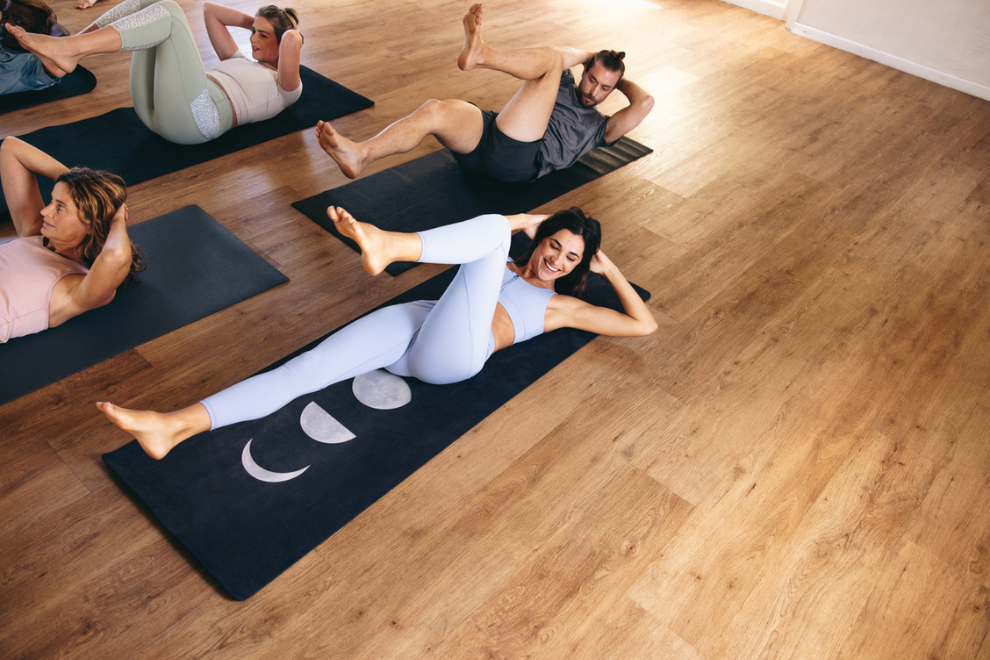From A-List Celebrities to your next-door neighbours, Pilates seems to be everywhere - but why is this low-impact workout suddenly so popular?
Once considered a niche studio practice, Pilates has now grown into a global fitness phenomenon. Whether it’s on social media feeds, in boutique studios, or as part of mainstream gym timetables, Pilates has carved out its place as a go-to form of exercise for people of all ages and abilities. But what exactly makes Pilates so irresistible? And perhaps more importantly - what can we as fitness professionals learn from its rise in popularity?
Let’s explore why Pilates is taking the world by storm.

1. Pilates Works for Every Body
One of the biggest reasons Pilates has become so popular is its accessibility. Unlike some training methods that can feel intimidating or physically demanding, Pilates is low-impact, making it kinder to the joints - yet it’s still remarkably effective at building strength, mobility, and stability.
It’s also highly adaptable: it can be done on a mat with bodyweight alone, with small pieces of kit such as bands or balls, or on specialist equipment like the reformer. This versatility makes it suitable for complete beginners as well as athletes looking to fine-tune performance. That universal appeal has helped Pilates break through into mainstream fitness culture.
2. Strengthening the Core and Beyond
Pilates is often celebrated for its core focus, but its benefits go far beyond abdominal strength. By working deep stabilising muscles, Pilates supports better posture, spinal health, and functional strength. These improvements often carry over into everyday life, from sitting at a desk with less back pain to performing better in sports.
This functional element is a key part of why Pilates has endured. It doesn’t just make you stronger in the studio - it makes you stronger in life.
3. Mind-Body Connection
A defining feature of Pilates is its emphasis on control, precision, and breathing. Sessions encourage participants to slow down, focus, and become more aware of how their body is moving. This creates a strong mind-body connection, which is increasingly appealing in today’s fast-paced world.
With the wellness industry booming and more people seeking holistic forms of exercise, Pilates provides both a workout and a mindful practice. It’s not just about burning calories, it’s about feeling more aligned, grounded, and mentally refreshed.
4. Influenced by Social Media and Celebrity Culture
There’s no denying the role social media has played in Pilates’ rise. Instagram and TikTok are filled with videos of reformer routines, influencers sharing “day in the life” Pilates content, and celebrities crediting the method for their physique and wellbeing.
This visibility has turned Pilates into more than just a workout, it’s become part of a lifestyle that many aspire to. For fitness professionals, this highlights how cultural trends and online influence can drive participation, shaping the way clients view and approach their fitness.
5. Pilates for Rehab and Functional Fitness
Beyond the aesthetic appeal, Pilates also has an important place in rehabilitation and functional training. Physiotherapists frequently incorporate Pilates principles into recovery programmes because of its controlled, alignment-focused approach.
For individuals dealing with injuries or looking to prevent them, Pilates offers a safe and effective way to rebuild strength and mobility. It reinforces the muscles we rely on most in day-to-day life, which makes it not only a workout but also a practical tool for long-term health.
6. A Workout That Fits the Wellness Lifestyle
More people today are choosing exercise that supports overall wellness, rather than simply focusing on calorie burn. Pilates perfectly aligns with this shift. Its blend of physical strength, improved mobility, and stress relief make it more than a workout, it’s a practice that fits seamlessly into a balanced, healthy lifestyle.
This is one of the reasons Pilates feels “future-proof” - it’s not just a passing trend, but part of a wider cultural movement towards sustainable, holistic health.

Conclusion
Pilates isn’t just another fitness trend, it’s a versatile, mindful, and highly effective approach to training that resonates with today’s wellness-focused culture. It builds strength, enhances posture, supports mental clarity, and can be adapted for almost anyone.
For personal trainers and fitness professionals, Pilates’ rise is a reminder of the importance of offering clients workouts that go beyond surface-level results. By embracing methods that support both physical and mental wellbeing, trainers can help clients achieve not only their fitness goals but also a more balanced, sustainable approach to health.







